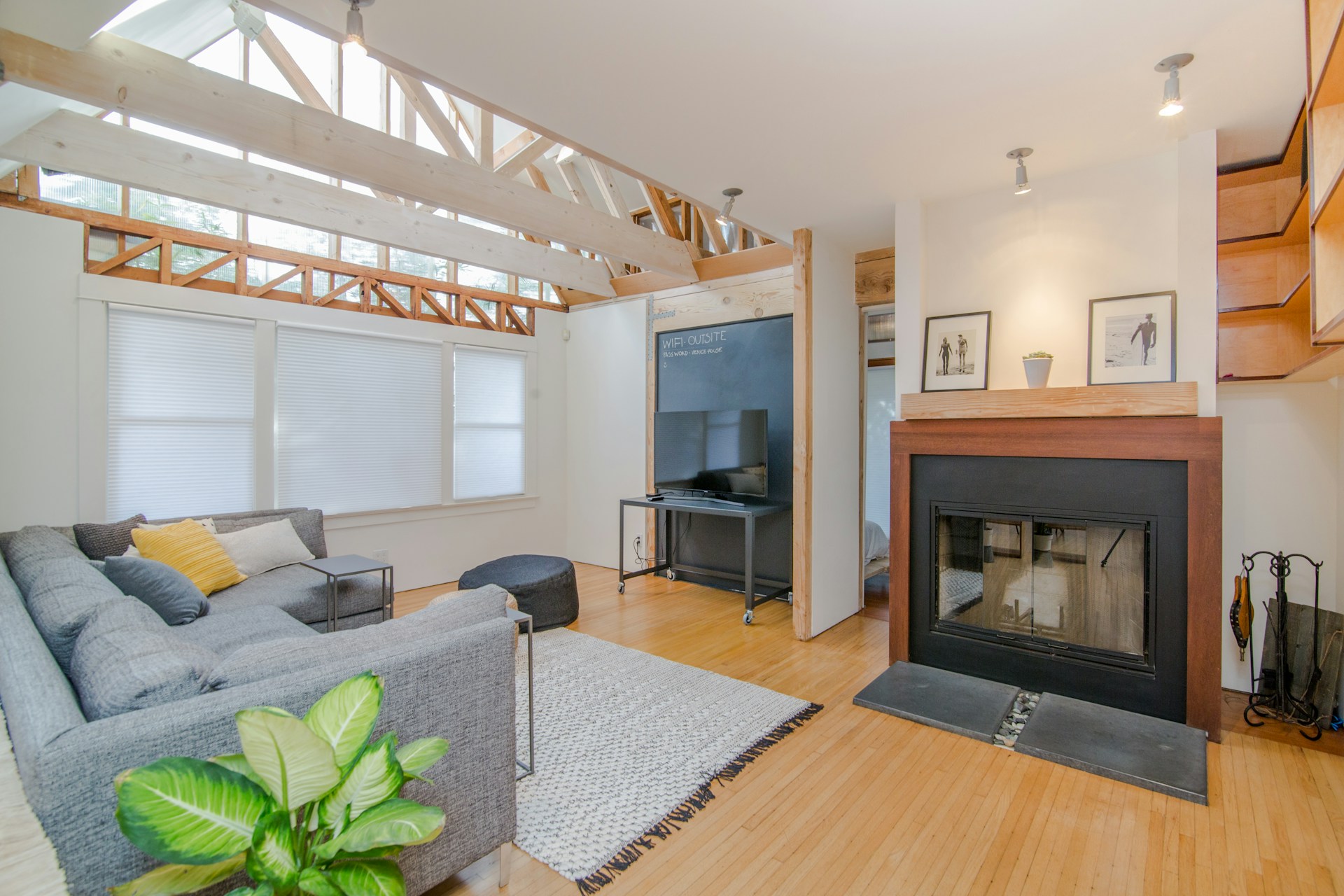Digital nomad statistics & trends: A look at remote work
Digital nomad statistics? Here, we invite you to explore the most relevant ones, from their countries of origin to their lifestyle.
Working remotely from anywhere in the world is a reality many professionals in various industries are looking to implement into their lifestyle. According to a recent study by MBO Partners about digital nomad statictics, there were an estimated 35 million digital nomads worldwide in 2023, three times more than in 2019. These workers seek not only freedom but also the chance to explore new cultures, enhance their quality of life, and optimize their finances.
The pandemic accelerated this global movement towards remote working. With Big Tech such as Google, Microsoft and Shopify adopting flexible working policies, more and more professionals have decided to become digital nomads. Of course, other lesser-known companies in the tech and communications industries have also adopted remote work due to its growing demand. Opening up the possibility of reducing costs and optimising resources. In this article, we’ll dive into the statistics that define this lifestyle, from demographic data to work and destination preferences, offering relevant insights about digital nomads today.
Demographic statistics of digital nomads
The digital nomad community is made up of people from all over the world, but some demographic groups stand out more than others.
1. Age of digital nomads
The age range of digital nomads is wide, although certain groups predominate. According to Statista and MBO Partners, digital nomads are mostly between 25 and 44 years old. This is the age distribution present in the latest report:
- 25 to 34 years old: 35%
- 35 to 44 years old: 31%
- Under 25years old: 12%
- 45 to 54 years old: 15%
- Over 55 years old: 7%
This age range makes sense, as many professionals have gained work experience and seek more flexibility in both personal and professional life.
2. Gender of digital nomads
In terms of gender, while digital nomadism used to be a male-dominated phenomenon, in recent years women have gained more ground. Statistics for 2023 show that 46% of digital nomads are women, compared to 54% men, according to MBO Partners. This shift reflects the growth in the number of female entrepreneurs and freelancers seeking a more flexible and adaptable lifestyle.

3. Marital status of digital nomads
While most digital nomads travel alone, there are a growing number of couples and even families adopting this lifestyle. According to NomadList, around 25% of digital nomads travel with their partners, while 10% travel with their children. This has led to an increased demand for family-friendly accommodation and international schools in key destinations.
4. Nationality and languages spoken by digital nomads
In terms of nationalities, digital nomads come from all over the world, but some countries dominate the scene. Data from NomadList and MBO Partners indicate that the top countries of origin for digital nomads are:
- USA: 30%
- UK: 15%
- Germany: 10%
- Canada: 8%
- France: 6%
- Australia: 5%
- Other countries (including Brazil, India, and Japan): 26%
In terms of languages, English is the language most spoken by digital nomads, being the common language in popular destinations. However, there is an increase in the number of nomads speaking multiple languages, with around 40% mastering two or more.
Education digital nomads statistics
The academic and professional profile of digital nomads tends to be high, giving them access to highly skilled and well-paid jobs.
1. Professions and specialisations
The most common areas of work among digital nomads include:
- Information technology (IT) and software development: 27%
- Digital marketing and social networks: 16%
- Graphic design and multimedia: 12%
- Writing, editing and translation: 10%
- Business consultancy: 9%
These sectors reflect the demand for digital skills and the ability to work remotely regardless of location.
2. Level of education
According to a study by MBO Partners, more than 60% of digital nomads have a university degree, and a further 25% have completed postgraduate studies. This is because many of the industries in which they work require a high level of skills and expertise.
3. Preferred universities
There is no specific university preferred by digital nomads. However, internationally recognized institutions like Harvard, MIT, and Stanford have graduates who embrace this lifestyle. Online learning platforms like Coursera, Udemy, and Google certifications are popular among digital nomads. They allow skill-building while travelling and updating resumes.
Occupations digital nomad statistics
Remote work isn’t limited to one category, and digital nomads tend to perform a wide range of jobs.
1. Positions held by digital nomads
The positions held by digital nomads tend to be highly specialised. Some of the most common include:
- Software developers
- SEO and digital marketing specialists
- Graphic designers
- Business consultants
- Entrepreneurs
Many digital nomads are self-employed. Around 42% of them work as freelancers, according to MBO Partners.
2. Working hours per week
While many digital nomads seek a better quality of life, it doesn’t always mean working fewer hours. In fact, 70% of digital nomads work between 30 and 50 hours per week, while 10% work more than 50 hours, according to NomadList.
3. Industry sectors
The most common sectors among digital nomads include:
- Technology: 28%
- Marketing and advertising: 17%
- Business consultancy: 13%
- Education and training: 9%
- Design and multimedia: 11%
Technology and marketing related sectors have grown due to the high demand for digital and remote work in these fields.

Statistics on digital nomads’ favourite countries
Digital nomads choose destinations based on various factors, such as cost of living, tech infrastructure, visa ease, and quality of life. As digital nomadism continues to grow, some countries have become true epicentres of this trend.
According to an analysis by NomadList and Remote Year, the countries most likely to attract digital nomads in 2023 are:
- Thailand: Bangkok and Chiang Mai are popular due to their low cost of living, diverse community and good internet access. They also offer excellent value for money and are cities with many cultures converging.
- Indonesia: Bali remains a top destination due to its tropical climate, relaxed lifestyle, and large community of digital nomads.
- Portugal: Lisbon and Porto have gained much popularity for their mild climate, relatively affordable cost compared to other European countries, and their cultural richness.
- Mexico: Mexico City and Playa del Carmen are top choices for nomads due to their strategic geographical location close to the USA and the low cost of living.
- Spain: Barcelona and Valencia are also very attractive, offering a high quality of life, an attractive technology scene and international connections.
Important: If you are a frequent traveler and want to stay connected without worrying about expensive roaming or looking for a new SIM at every destination, Holafly’s subscription plans are for you. With a single eSIM, enjoy internet in more than 170 countries for a fixed price and no surprises on your bill. Travel without limits and connect easily and securely! 🚀🌍

Digital nomad statistics in Latin America
Latin America has experienced a remarkable growth in the number of digital nomads in recent years, due to its affordable cost of living, cultural diversity and warm climate. Countries such as Mexico, Colombia and Argentina have become key destinations for those seeking a flexible lifestyle while working remotely.
1. Favourite countries for nomads in Latin America
According to NomadList and MBO Partners, digital nomads choose Latin America for its proximity to the U.S., growing digital infrastructure, and mix of nature, culture, and entertainment. According to updated data the most popular destinations in the region include:
- Mexico: Especially Mexico City, Playa del Carmen and Tulum are favourite destinations for their cultural offerings, lifestyle and good internet connection. More than 15% of digital nomads travelling to Latin America choose Mexico as their main destination.
- Colombia: Bogota and Medellin are outstanding choices due to their pleasant climate, low cost of living and growing community of travellers. Medellín is particularly well known for its technology infrastructure and co-working spaces.
- Argentina: Buenos Aires is known for its art scene, culture and freelance community. The country also benefits from a relatively low cost of living for those coming with an income in dollars or euros.
- Costa Rica: This country attracts digital nomads seeking a lifestyle closer to nature, offering a mix of beaches, jungles, and a welcoming freelancer community.
2. Living costs in Latin America
Cost of living is one of the key factors why digital nomads choose Latin America. According to NomadList, the average monthly cost for a digital nomad in the most popular destinations in the region is:
- Mexico (Mexico City): $1,.500 – 2,200 per month.
- Colombia (Medellín): $1,000 – 1,500 per month.
- Argentina (Buenos Aires): $1,000 – 1,700 per month.
- Costa Rica (San José): $1,600 – 2,500 per month.
These costs include accommodation, food, transport and entertainment, and vary depending on the nomad’s preferred lifestyle.
3. Digital nomad profile in Latin America
Regarding the profile of digital nomads who choose Latin America as their temporary base, the distribution is similar to global trends:
- Age: The majority of digital nomads travelling to the region are between 25 and 45 years old. Approximately 60% of these professionals are in this age range.
- Professions: Digital nomads in Latin America tend to be employed in sectors such as digital marketing, software development, graphic design and business consulting.
4. Digital growth in Latin America
According to a study by Statista, the number of digital nomads in Latin America has grown by 49% since 2019. This increase has been driven by the expansion of co-working services and improved internet connectivity, particularly in cities such as Bogotá, Buenos Aires and Mexico City.
Several governments in the region have also started to implement friendly policies to attract digital nomads. Mexico, for example, offers a temporary residence visa for remote workers. Other countries like Costa Rica and Brazil have explored similar initiatives to attract these professionals.
5. Digital infrastructure for nomads in Latin America
A constant challenge in Latin America is digital infrastructure, although it has improved significantly in recent years. Cities such as Mexico City, Bogotá and Medellín have invested heavily in upgrading their internet infrastructure, and now have competitive broadband speeds. According to Speedtest Global Index, average internet speeds in major Latin American cities in 2023 were:
- Mexico (Mexico City): 60 Mbps.
- Colombia (Bogotá): 45 Mbps.
- Argentina (Buenos Aires): 35 Mbps.
- Brazil (São Paulo): 55 Mbps.
These speeds are sufficient for most remote jobs requiring a stable connection. However, in rural or remote areas, connectivity may be more limited.
Countries of origin of digital nomads worldwide
Digital nomads come from all over the world, but data from MBO Partners and Statista indicate that the majority come from:
- USA: 30%
- UK: 15%
- Canada: 8%
- Germany: 10%
- Australia: 5%
These countries typically have strong tech and labor infrastructure, allowing workers to move without losing their job connections.
Salaries digital nomads statistics
One of the most common questions among those looking to adopt the digital nomad lifestyle is how much digital nomads earn and how salaries vary by occupation and region.
1. Digital nomads’ average incomes
Digital nomads’ incomes vary considerably according to profession and experience. According to data from MBO Partners and NomadList, in 2023 the average annual income of digital nomads was:
- Less than $30,000 per year: 34%
- $30,000 to $75,000 per year: 40%
- More than $75,000 per year: 26%
This shows that digital nomadism isn’t exclusive to high earners. It’s also accessible to workers with more moderate incomes, depending on the location and cost of living.
2. Highest-paying digital nomad jobs
The highest paid occupations among digital nomads tend to be related to the technology and business sector. According to a Payoneerreport, the highest salaries belong to:
- Software developers and programmers: $85,000 – 150,000 per year
- Business consultants: $75,000 – 120,000 per year
- Digital marketing managers: $70,000 – 100,000 per year
- UX/UI designers: $65,000 – 90,000 per year
3. Highest-paying digital nomad jobs
On the other hand, some occupations, while offering more flexibility, tend to have lower earnings. These occupations include:
- Content writers: $25,000 – 50,000 per year
- Translators: $20,000 – 45,000 per year
- Customer support: $20,000 – 40,000 per year
These occupations tend to have lower incomes due to high competition and the possibility of outsourcing services to countries with lower labour costs.
Lifestyle digital nomads statistics
The lifestyle of digital nomads varies depending on their place of residence, preferences and budget. However, there are certain patterns and habits that stand out in most cases.
1. Workplaces of choice for digital nomads
Where digital nomads choose to work from also varies considerably. According to a NomadListsurvey, in 2023 digital nomads would prefer the following spaces to work in:
- From home or Airbnb: 40%
- Co-working spaces: 35%
- Cafeterias: 15%
- Hotels: 5%
- Outdoors (beaches, parks): 5%
This trend shows a preference for flexible spaces, like coworking spaces, which offer both social interaction and a professional environment. Cities such as Lisbon, Barcelona and Chiang Mai have popular co-working spaces.
2. Entertainment options for digital nomads
The digital nomadic lifestyle also brings with it a range of active entertainment options. According to Remote Year, digital nomads enjoy activities related to:
- Cultural tourism: 60%
- Sports and outdoor activities (hiking, diving, surfing): 45%
- Networking with other digital nomads: 40%
- Volunteering and social projects: 25%
As a result, high-speed internet access in most cities has allowed digital nomads to also enjoy streaming platforms and online video games as another source of entertainment.

3. Types of food for digital nomads
When it comes to food, many digital nomads are looking for affordable and healthy options while travelling. According to NomadListdata:
- 50% of digital nomads prefer to cook at home to save money.
- 30% tend to eat in affordable local restaurants.
- 20% follow specific diets (vegetarian, vegan, keto) and tend to look for places specialising in healthy food.
4. Places where remote workers live
Housing also varies among digital nomads, depending on their preferences and budgets. The most common options in 2023 included:
- Short-term rentals (Airbnb, Booking): 50%
- Hostels-living spaces and shared accommodation: 20%
- Hotels: 15%
- Exchange houses or temporary residences: 10%
- Motor-homes: 5%
Cities such as Bali, Mexico City and Lisbon offer a wide range of accommodation options that appeal to these professionals on the move.





 Language
Language 


















 No results found
No results found







